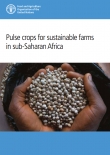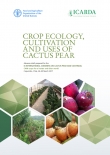出版物

Action is at the heart of the Sustainable Development Goals (SDGs). As the main connection between people and planet, sustainable food and agriculture can fuel positive change. How can decision-makers turn that potential into reality? How can they prioritize activities and resources to accelerate progress?
The FAO publication “Transforming food and agriculture to achieve the SDGs: 20 Actions” presents practical solutions through 20 interconnected actions, each describing approaches, policies and tools that contribute to multiple SDGs. These actions reflect the social, economic and environmental dimensions of sustainable development, and confront trade-offs as well as synergies. Progress requires participation and partnerships among different actors. This guide can inform coherent country-specific paths towards achieving sustainable development through food and agriculture.

Livestock Farmer Field Schools (FFSs) are “schools without walls” where groups of small-scale livestock producers test, validate, and adapt good agricultural and marketing practices that help them increase their production sustainably and to improve their, and their families’, livelihoods. Over the past two decades, Livestock FFSs have been implemented/supported by the Food and Agriculture Organization of the United Nations (FAO) and other development stakeholders in a wide range of environments and livestock production systems including pastoralism and agro-pastoralism, dairying, poultry production, integrated rice-duck systems, rabbit production, pig production, beekeeping, beef production, camel production and small ruminant production.

Pulses have a long history in sub-Saharan Africa due to their multiple benefits.
Pulses, and legumes in general, can play an important role in agriculture because
their ability to biologically fix atmospheric nitrogen and to enhance the biological
turnover of phosphorous; thus they could become the cornerstone of sustainable
agriculture in Africa.

Crop wild relatives are potential sources of desirable traits for breeding well-adapted varieties while wild food plants constitute important components of the diets of many people worldwide. Unfortunately, their natural wild habitats are increasingly under threat from both human activities and natural disasters. Habitat loss has a direct, negative impact on the diversity of these valuable resources. These guidelines, intended as reference materials for preparing a National Plan for the Conservation and Sustainable Use of Crop Wild Relatives and Wild Food Plants, will contribute to stemming this continuing loss in diversity. The guidelines are therefore a useful tool for development practitioners, researchers,
students and policy-makers who work on the conservation and sustainable use of these valuable resources.

Cactus crops are gaining increasing interest across the globe, in particular cactus pear (Opuntia ficusindica),
because of its unique characteristics which provide resilience to the above mentioned harsh
conditions. Cactus pear is able to grow on land where no other crops are able to grow; it can be used
to restore degraded land and in many countries, such as Ethiopia, it is the only crop that can be relied
on when everything else fails. The crop originates in Mexico – still the largest producing and consuming
country in the world – but other countries, including Morocco, Ethiopia, South Africa, Kenya, India and
Pakistan, are increasing their production and use.

